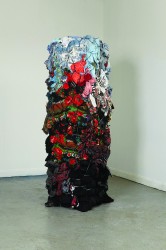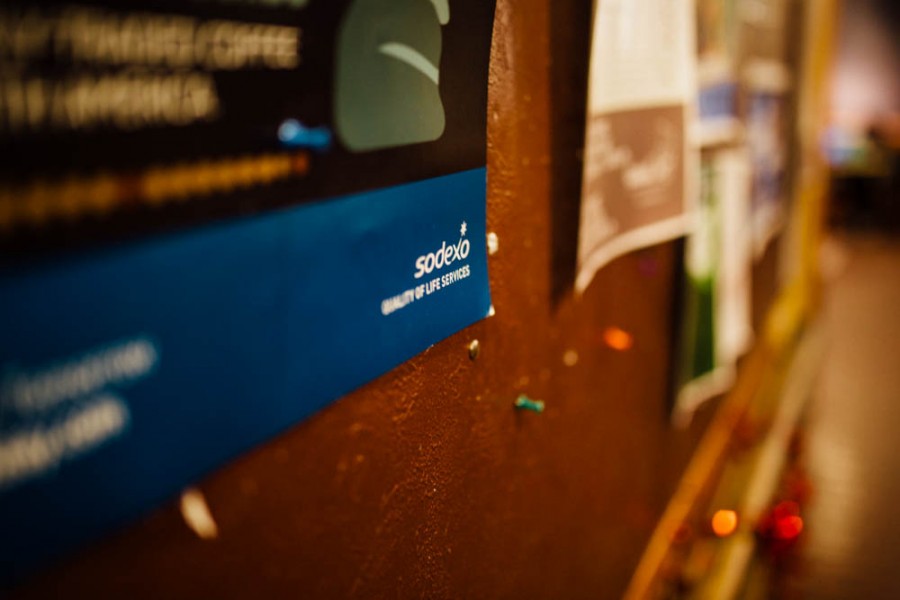
The newest exhibitions at the Haggerty Museum of Art, opening Wednesday, combine art with economic trends by addressing consumerism and what we do with the items we accumulate.
The theme grew from the work of artist Brian Ulrich, whose three series of photographs, “Retail, Thrift, and Dark Stores, 2001-2011,” chronicle the boom and bust of that decade. As his focus shifted with the economy, the images of shoppers at supermarkets and malls transformed into the cluttered excess of thrift stores and gave way to the abandoned and empty buildings the recession created.
“The artist became very interested in the economics of the United States and how, at the time of 9/11, we were told it’s patriotic to go and buy things. He’s not trying to say buying is bad but really about thinking how this has impacted our life,” Lynne Shumow, curator of education, said.
The true practice under scrutiny is the way we react to this choice while shopping.
“This idea of buying inexpensive goods (is) almost more than we can deal with, and so you have all these thrift stores and he photographed all these people overwhelmed by all these goods,” Shumow said.
It is from this idea that the four exhibits grew, all touching upon the mass consumption of capitalistic society.
The ground floor exhibit, “Between Critique and Absorption,” examines and delves into consumerism through the work of six contemporary artists in a variety of mediums. Especially fascinating are the mock-up advertisements of the ubiquitous IKEA furniture that attempt to provide us with a sense of individuality on a cheap mass-produced scale.
Also impressive in this exhibit are the receipt tapestries of artist Gabriel Kuri, a clever comment on the disposable record we create daily and are painstakingly reproduced on the woven fabric. The two tapestries contain the same basket of goods bought two years apart artistically showing the change in prices.
“It’s talking about basic necessities and what it costs to live and receipts create a record about one’s life,” Shumow said.
Upstairs, the other two exhibits are collaborations with and curated by the Chipstone Foundation. Chipstone manages the world class private collection of Stanley and Polly Stone, a husband-wife team who used their fortune to collect and preserve decorative artwork and ceramics with historical significance.
The first of the exhibits put on by the Foundation is “An Aesthetic Afterlife.” All of its works were constructed with secondhand objects by six Wisconsin artists whose keen eyes scavenged items from dumpsters or street corners and given the items another chance. Some of the art is made with recycled bags to create sculptures that will grow as the Haggerty’s waste piles up over the course of the semester. Artist Yevgeniya Kaganovich’s vision will be further communicated to students in several workshops in which students have the opportunity to assist her in the creation of the garbage bag sculptures.
The fourth exhibit, “The Print Room,” may be the most impressive undertaking in the museum. Working with the Chipstone Foundation, the Haggerty transformed part of its upper floor into a model of an 18th century printing room, which became popular among the upper classes to display their ceramics.
“You create for the visitor a transformative experience and museums are at their best when they are transformative,” said Jonathan Prown, executive director of the Chipstone Foundation.
For Prown, creating such spaces and changing the way audiences experience museums is an important part of not only conveying an artistic argument but getting the audience to stick around in the first place.
“In the 21st century, museums have to change … if when you get there it’s just kind of boring taxonomies and chronologies that don’t make much sense, it’s not going to keep you around,” he said.
Such creations, though, only last for so long before the museum wants a new one, and they become waste. The pressing question, given the exhibitions’ meditations on consumerism and its waste, is what will happen to “The Print Room” May 18 when the exhibitions come to a close?
It turns out that much of the room consists of reused materials.
“We realized this room is really cool, and we like to activate spaces in this way,” Prown said. “We are going to take this room up to Chipstone and install it in the house. Prior to this, all ceramics were hand painted, if decorated at all … and with the transfer print it meant that now retailers could put anything on the ceramic, so this is sort of expressly about consumerism.”
“I think that we are in an age where people are consuming and consuming at alarming rates and our resources are diminishing at the same time so I think it’s a very important issue to be looking at,” said Brent Budsberg, who designed and built the room. “The print room is really about consumerism as well but in an era where those concerns weren’t as present. We weren’t thinking in terms of environmental issues and things like that in the 18th century when they were collecting transfer print ceramics but it is sort of a consumerism that evolved into where we are now.”
As a whole, the Haggerty’s exhibits convey the artists’ concerns with our rapid produce and discard culture as well as their curiosity about how we deal with it, something Marquette students should wonder as well.





